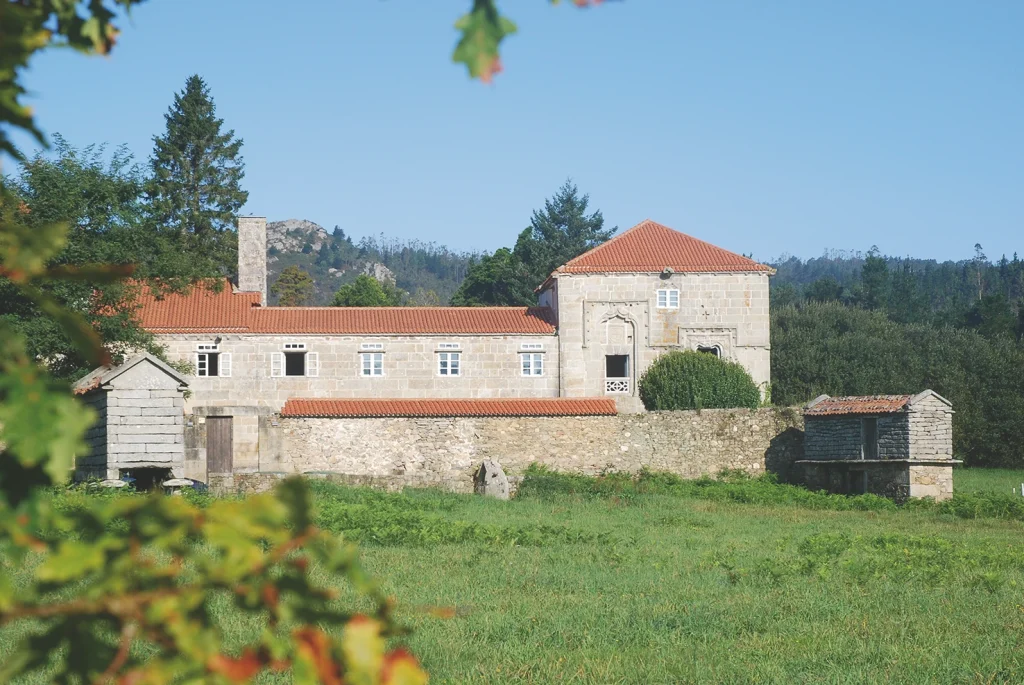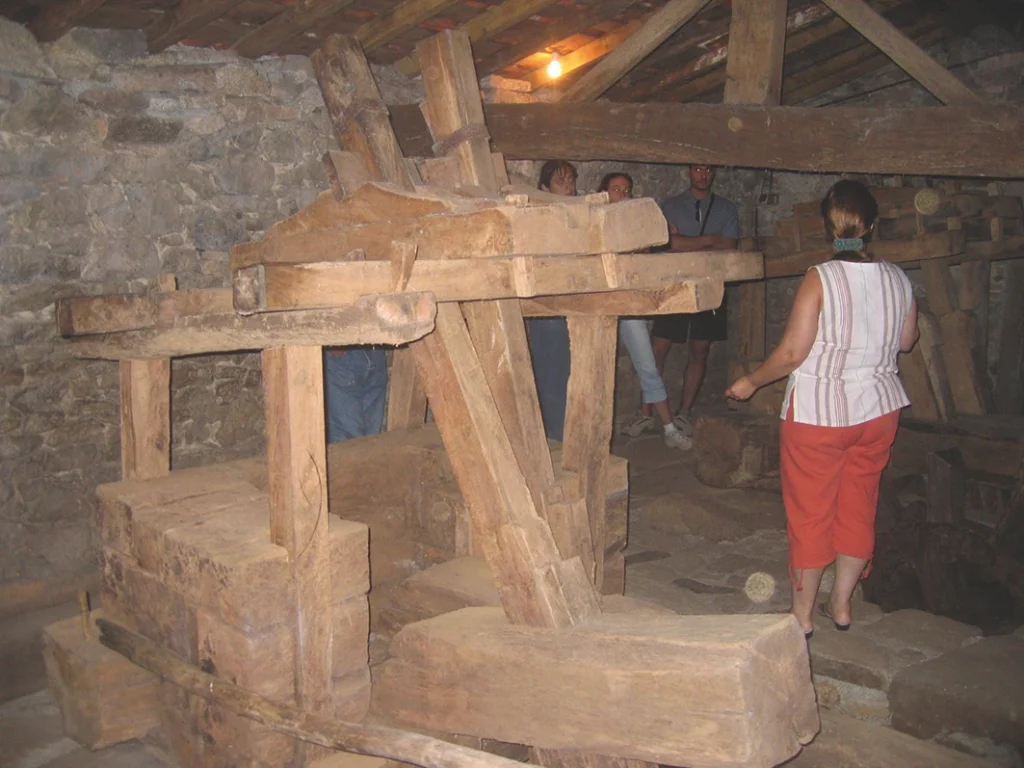Besides the building’s splendid architecture, it also has a lot of historical value for being the first Galician pazo, or manor house, since the first period of construction dates back to the late 15th or early 16th century. It belonged to the same family throughout its long and varied history. The Rioboos came from Torre da Penela (Silvarredonda, Cabana de Bergantiños), but their surname comes from the parish of San Martiño de Riobó.
It was initially believed that the entire building had been built at the same time, but the book Torres do Allo. Arquitectura e historia del primer pazo gallego (Sánchez García, J. La., 2001)2 demonstrated that the north tower, or Torre Viexa was built between 1490 and 1512, and was commissioned by Alfonso Gómez de Rioboo Villardefrancos, about 175 years before the south tower or Torre Nueba. The central part of the building was commissioned by Gómez de Rioboo y Seixas and his wife Jacinta de Luces Caamaño and was built between 1669 and 1685, in a period when the Baroque style was spreading throughout Galicia. However, the family chose to maintain the late Gothic and early Renaissance styles of the old tower.

The building is about 35 metres long and consists of two square towers with hipped roofs, joined by a rectangular building with a gabled roof.
The towers are almost symmetrical, there is a door on the ground floor with a semicircular arch and large corbels, typical of the architecture of the 16th c. Most of the decoration of the building is on the upper floor: a window with a double ogival arch, stone-tiled roof shaped like a ledge, and a larger window alongside with a balcony on the south tower and a coat of arms above. All the elements are surrounded by a mixtilinear arch. There is a window on the top floor of each tower.
The central part consists of two floors with a large chimney stack. There are two floors on the ground floor: the main door in the centre, and a side door on the left. There are six rectangular windows on the upper floor. A cornice runs around the entire building, except for an area in the centre where the gargoyles are.
The coats of arms contain the symbols of the families that lived here: Rioboo (tower covered in brambles), Caamaño (pine tree and lances), Seixas (five doves), Losada (two lizards under a slab) and Figueroa (five fig leaves). Famous residents of this house include: Antonio Rioboo y Seixas, author of the book La barca más prodigiosa. Poema historial sagrado (1728), about the Virxe da Barca (the Virgin of the Boat) in Muxía, and the naturalist from Ferrol, Victor López Seoane, who married Francisca de Rioboo Álvarez, the first female heir of the house.

In the first half of the 20th c., the owners abandoned the house, which was then occupied by their agents. It was then left unoccupied in the second half of the century and deteriorated to the point where it almost became a ruin. The Provincial Government of A Coruña was interested in restoring the building and purchased it in 1998; it was rehabilitated and opened to the public the following year.
Close by is the church of San Pedro do Allo, built in the Renaissance style and closely linked to the lords of the manor house.
The most interesting feature of the church is the Renaissance façade, similar to a stone altarpiece and divided into three panels. The church door is in the central panel, which is the widest. The side panels are framed by fluted columns on plinths. The figures of Adam and Eve are depicted on the lower area, while the archangel Gabriel and Mary are in the upper part. The patron saint of the parish, St Peter, is in the centre above the door.
Close by is a calvary and the new parish cemetery, which were completed in the 21st c. and show great artistic sensitivity and respect for the surroundings.
At the exit of the Torres do Allo, take the AC-552 once again towards Baio. Go through the village and cross the bridge over the river O Porto. About one kilometre further on you’ll come to a crossing on the right to the ethnographic site of O Mosquetín, carry on along this route and cross the river once again. Once you reach some houses next to the river, you’ll see some traditional buildings.
